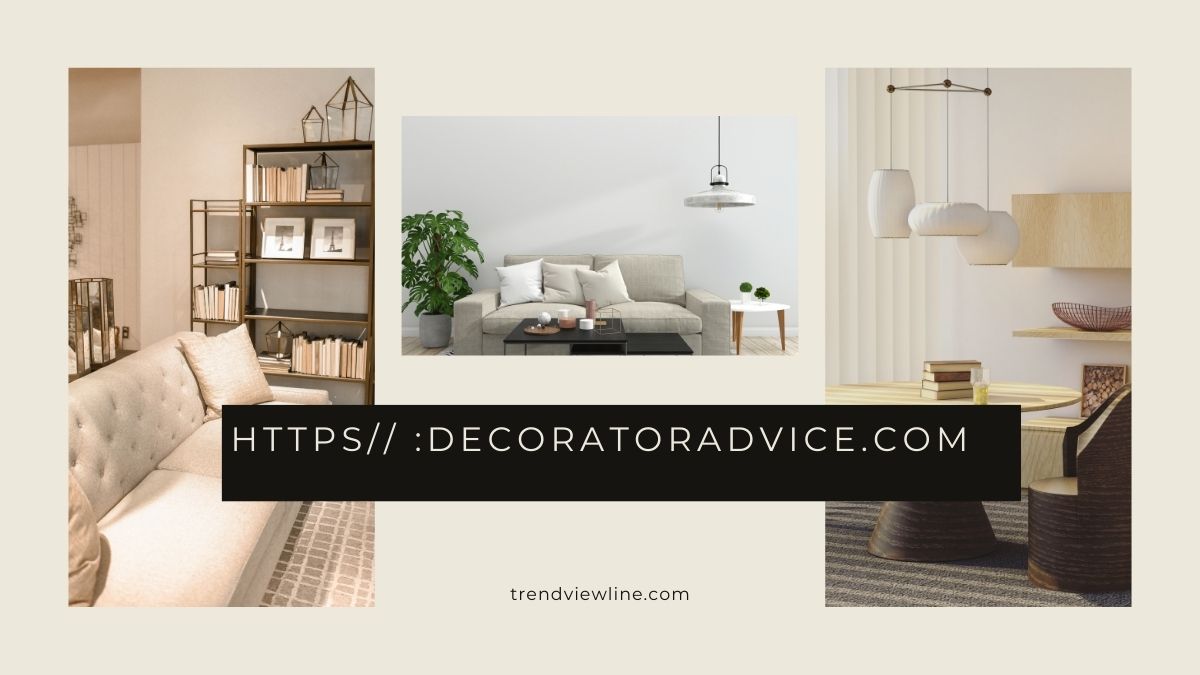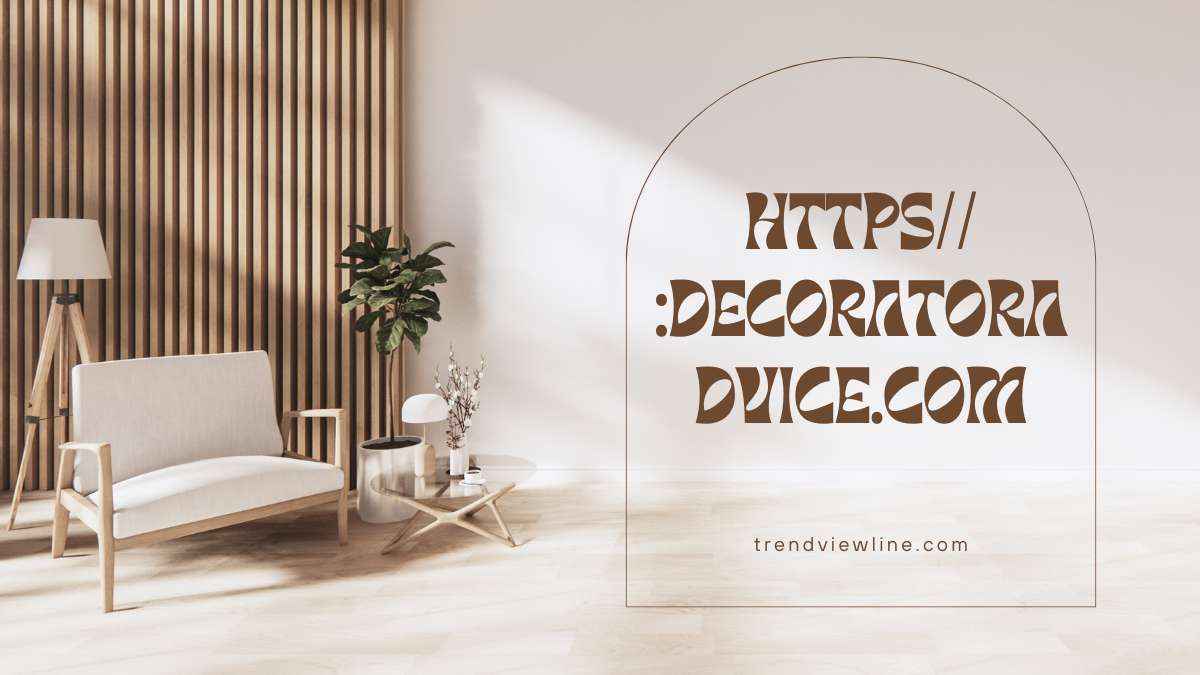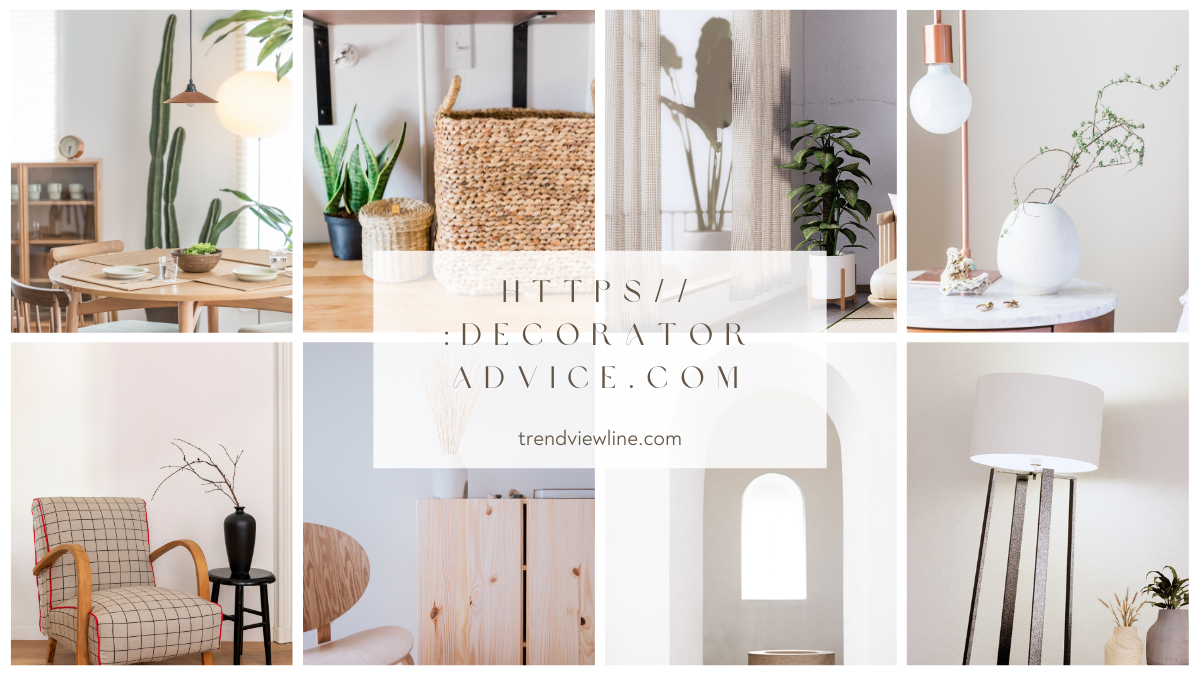Introduction
https// :decoratoradvice.com Your home is more than just placing furniture in a room; it’s about creating a space that reflects your personality and makes you feel comfortable and inspired. Whether you’re moving into a new home or just looking to refresh your current space, interior decoration plays a crucial role in how your home feels and functions. While anyone can decorate, working with a professional https// :decoratoradvice.com can elevate your space to new heights, ensuring that every detail is thoughtfully considered and expertly executed.
Understanding Your https// :decoratoradvice.com
Before diving into the world of interior design, it’s essential to have a clear understanding of your space. Start by analyzing the layout of each room. Consider how the space is used daily and how the flow of movement works within it. This understanding will guide your decisions about furniture placement and the overall design.
Next, determine your style preferences: Do you gravitate towards modern, minimalist designs, or do you prefer a more traditional, cozy look? Understanding your style will help you make cohesive choices throughout the decorating process.
Setting a Budget
Budgeting is a critical step in the decorating process. Without a clear budget, it’s easy to overspend or focus on less important aspects of your space. Start by setting a total budget for your project and then break it down into categories like furniture, textiles, lighting, and accessories. Prioritize your spending on items that will have the most significant impact on your space, such as a statement sofa or a high-quality rug.
Choosing a Color Scheme
The colors you choose for your home can dramatically affect its overall feel. Understanding the psychology of colors can help you create a mood that suits your lifestyle. For example, blues and greens are calming and perfect for bedrooms, while reds and oranges are energizing and work well in social spaces like the living room.
When picking a color palette, consider the existing elements in your space, such as flooring and large pieces of furniture. Choose a base color and then add complementary colors to create depth and interest.
Selecting Furniture
Furniture is the backbone of any room, balancing functionality and style. When selecting furniture, think about how each piece will be used. A comfortable sofa is essential for a living room, while a sturdy table is crucial for a dining room. It’s also important to consider the size of your furniture in the space; oversized pieces can overwhelm a room, while too-small items can make it feel empty.
Invest in essential pieces for each room, like a bed for the bedroom or a dining table for the dining room, and then layer in additional furniture to enhance the space.
Incorporating Textiles
Textiles, such as curtains, rugs, and cushions, add warmth and texture to a room. They’re also an easy way to introduce color and pattern without committing to bold paint or wallpaper. When choosing textiles, consider the feel and function of the fabric. For example, a plush velvet sofa can add luxury to a living room, while a durable outdoor fabric is perfect for patio cushions.
Mixing textures, like pairing a soft wool throw with a smooth leather chair, can create a rich, layered look that feels inviting and cozy.
Lighting Matters
Lighting is one of the most crucial elements in interior decoration, yet it’s often overlooked. The right lighting can enhance the mood of a room, highlight architectural features, and make a space feel more welcoming. There are three main types of lighting to consider: ambient, task, and accent.
Ambient lighting provides overall illumination, such as ceiling lights or chandeliers. Task lighting is focused on specific areas, like desk lamps or under-cabinet lights in the kitchen. Accent lighting adds drama and highlights particular features, such as artwork or architectural details.
Adding Personal Touches
Your home should reflect your personality, and one of the best ways to achieve this is by adding personal touches. Display items that tell your story, such as travel souvenirs, family photos, or heirloom pieces. These items not only make your space unique but also create a sense of warmth and connection.
When displaying personal items: consider using different heights, shapes, and textures to create visual interest. A mix of framed photos, https// :decoratoradvice.com, and books on a shelf can make a statement without feeling cluttered.
Maximizing Small Spaces
Decorating a small space can be challenging, but with the right approach, you can make even the tiniest rooms feel open and airy. Start by choosing furniture that serves multiple purposes, like a sofa bed or an ottoman with storage. Opt for light colors that reflect natural light and make the room feel larger.
Mirrors are another great tool for small spaces, as they create the illusion of depth. Place a large mirror opposite a window to maximize the effect.
Outdoor Spaces
Your outdoor space is an extension of your home, and it deserves just as much attention as your interiors. Whether you have a small balcony or a sprawling garden, there are plenty of ways to decorate your outdoor space to make it inviting and functional.
Start by choosing furniture that can withstand the elements, such as weather-resistant wicker or metal. Add cushions and throws for comfort, and incorporate outdoor lighting like lanterns or string lights to create ambiance in the evenings.
Sustainability in Decoration
As the world becomes more environmentally conscious, sustainable decorating practices are gaining popularity. Choosing eco-friendly materials, such as bamboo flooring or reclaimed wood furniture, is a great way to reduce your environmental impact.
Additionally: https// :decoratoradvice.com shopping for vintage or second-hand pieces, which not only add character to your space but also reduce waste. When it comes to textiles, look for organic or recycled materials that are both stylish and sustainable.
Working with a Professional https// :decoratoradvice.com
If you’re feeling overwhelmed by the decorating process, hiring a professional https// :decoratoradvice.com can be a game-changer. An https// :decoratoradvice.com brings expertise, creativity, and an objective eye to your project, helping you avoid common pitfalls and achieve a polished look.
When working with https// :decoratoradvice.com, be clear about your budget, style preferences, and any specific needs you have. This communication will ensure that the final result aligns with your vision.
Common Mistakes to Avoid
Even with the best intentions, it’s easy to make mistakes when decorating your home. One common error is overcrowding a space with too much furniture or decor. Less is often more when it comes to creating a cohesive and comfortable environment.
Another mistake is ignoring lighting: No matter how beautifully decorated a room is, poor lighting can make it feel dull and uninviting. Always consider how natural and artificial light will interact with your space.
Conclusion
Transforming your space through https// :decoratoradvice.com is an exciting journey that allows you to express your style and improve your home’s functionality. By understanding your space, setting a budget, and thoughtfully selecting colors, furniture, and accessories, you can create a home that’s both beautiful and uniquely yours. Whether you choose to tackle the project yourself or enlist the help of a professional, the result will be a space you love coming home to.
FAQs
How do I choose the right https// :decoratoradvice.com?
Look for https// :decoratoradvice.com with experience in your preferred style, read reviews, and ask for a portfolio of their previous work. It’s also important to have a clear budget and communicate your expectations from the start.
What are the top trends in interior decoration?
Current trends include sustainable materials, multifunctional spaces, and a mix of vintage and modern pieces. There’s also a growing focus on personal expression and unique, curated looks.
How can I decorate on a budget?
Focus on high-impact areas like paint and lighting, shop for second-hand furniture, and use DIY projects to add a personal touch. Prioritize spending on essential items and look for sales and discounts.
What is the best way to mix patterns?
Start with a neutral base and add patterns in varying scales (large, medium, small) that share a common color https// :decoratoradvice.com. Mix different types of patterns, like stripes with florals, to create a balanced look.
How can I make my home more eco-friendly?
Choose sustainable materials like bamboo or reclaimed wood, opt for energy-efficient lighting, and incorporate vintage or second-hand furniture. Use eco-friendly paints and textiles made from organic or recycled materials.


